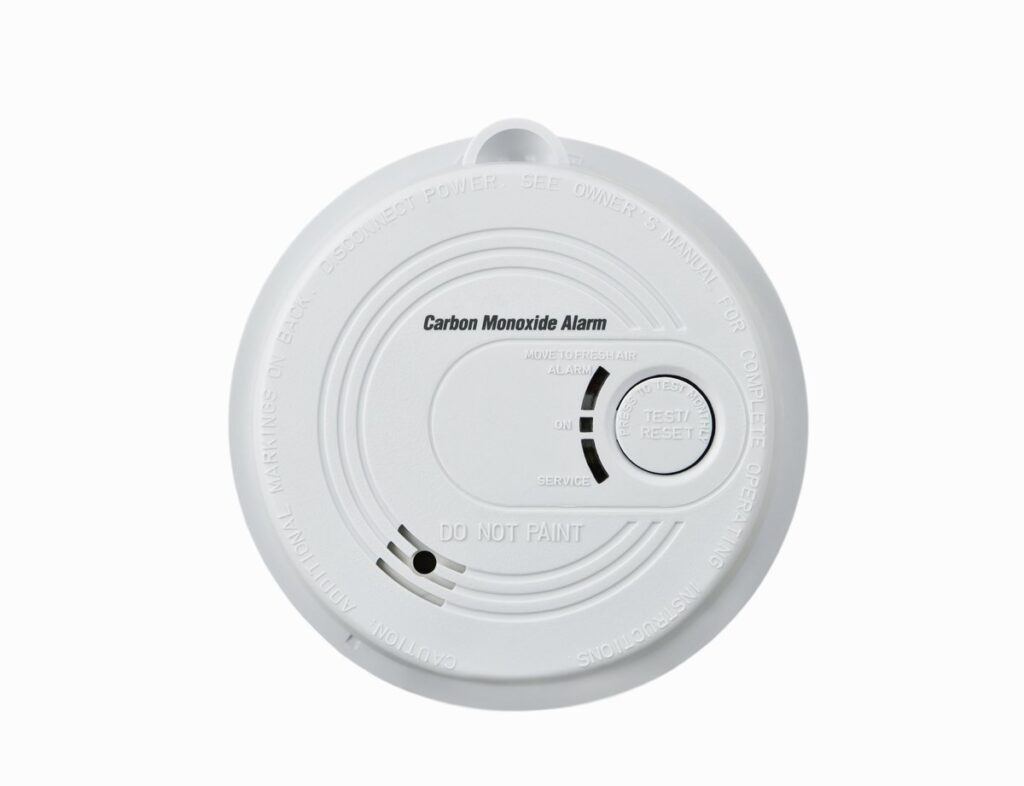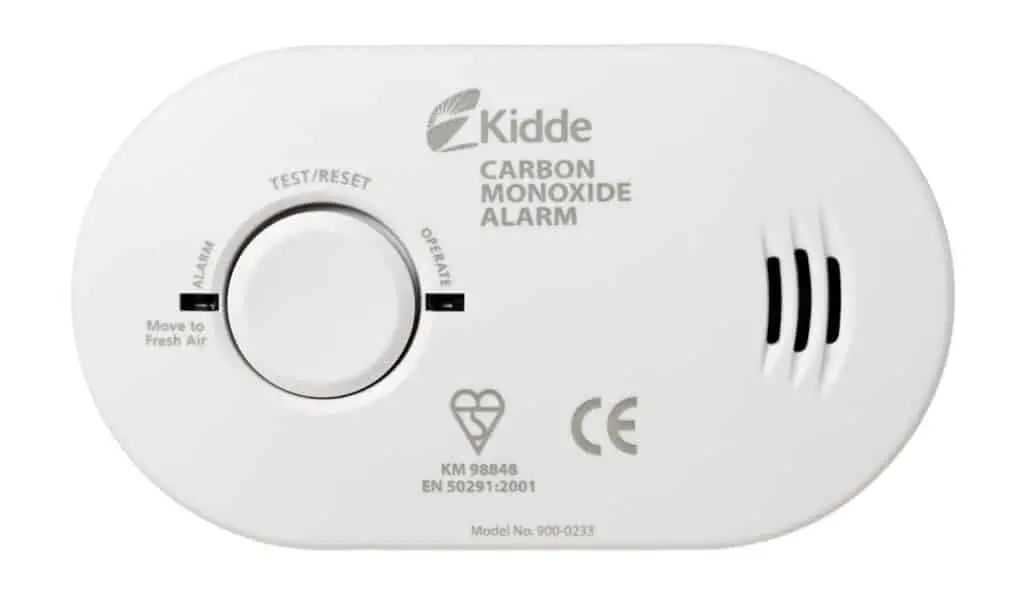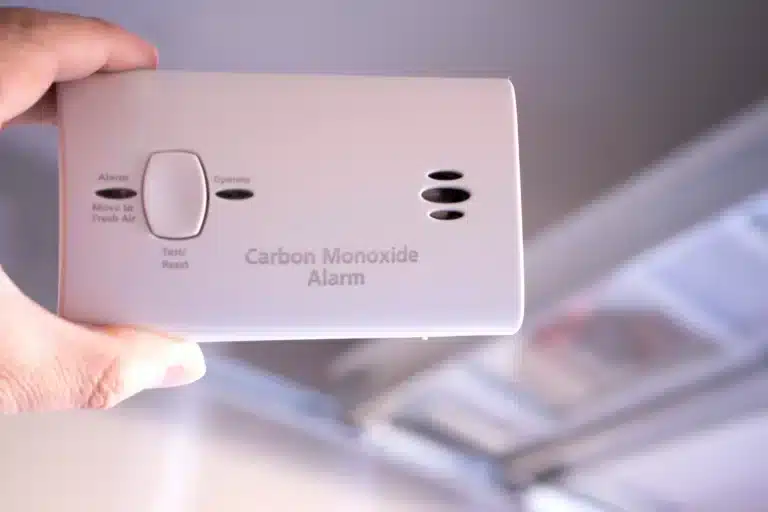Introduction
Where Are Carbon Monoxide Detectors Required: Carbon monoxide (CO) is a colorless, odorless, and tasteless gas that poses a significant threat to human health due to its ability to interfere with oxygen uptake in the bloodstream. Given its elusive nature, carbon monoxide can accumulate in indoor spaces without any noticeable warning signs. To safeguard against this hidden danger, carbon monoxide detectors have become an essential component of residential and commercial safety measures.
These devices are required in various settings to ensure the early detection of CO levels, thereby providing occupants with a vital heads-up and precious time to respond appropriately. Understanding where carbon monoxide detectors are mandated is crucial for maintaining a secure environment and preventing the potentially lethal consequences of carbon monoxide poisoning.
Recognizing the severe health risks associated with carbon monoxide exposure, many jurisdictions and regulatory bodies have enacted laws and guidelines mandating the installation of carbon monoxide detectors in specific locations. These requirements typically aim to ensure the safety of occupants in various settings, including residential dwellings, commercial properties, and public spaces.

Where do carbon monoxide detectors need to be?
If you are installing only one carbon monoxide detector, the Consumer Product Safety Commission (CPSC) recommends it be located near the sleeping area, where it can wake you if you are asleep. Additional detectors on every level and in every bedroom of a home provide extra protection against carbon monoxide poisoning.
In residences, carbon monoxide detectors are essential due to the presence of fuel-burning appliances like gas stoves, furnaces, fireplaces, and attached garages. Detectors should be installed near sleeping areas to provide early warning during the night when occupants are less likely to be alert. If there are multiple levels in the house, detectors should be placed on each floor, including the basement. In homes with interconnected rooms or open layouts, it’s wise to install detectors in common areas to ensure comprehensive coverage.
Since people spend a significant portion of their time sleeping, carbon monoxide detectors are crucial in bedrooms and other sleeping spaces. The alarms from these detectors can wake individuals in the event of a CO leak, providing them with a chance to evacuate or take appropriate action before the gas reaches dangerous levels.
Fuel-burning stoves and ovens are commonly found in kitchens, making them potential sources of carbon monoxide emissions. Placing a detector in or near the kitchen ensures that any leakage is detected promptly. Additionally, living areas with fireplaces or gas heaters should have detectors installed nearby to prevent CO accumulation.
Basements often house utility rooms with boilers, water heaters, and other fuel-burning equipment. Carbon monoxide detectors should be positioned in these areas to detect any CO emissions. Garages, particularly attached ones, are susceptible to CO buildup if vehicles are left running. Detectors in garages help monitor and prevent any hazardous gas accumulation.
Do you need carbon monoxide detector in every room?
Ideally, you should have carbon monoxide detectors placed throughout your home, as you do smoke alarms. You should place a CO detector in each major area of your home: in the kitchen, in your living/dining room, in your bedrooms, and the office.
Carbon monoxide is produced by incomplete combustion of fuels such as gas, oil, coal, and wood. Spaces with fuel-burning appliances like gas stoves, furnaces, water heaters, fireplaces, and attached garages are more likely to have elevated CO levels. It’s essential to install detectors near these potential sources to ensure timely detection of any gas leakage.
In residential homes, it’s not necessary to have a carbon monoxide detector in every room. Instead, focus on placing detectors strategically in areas where fuel-burning appliances are located. Install detectors near sleeping areas to provide early alerts during the night when people are asleep and less likely to notice symptoms of CO exposure.
If your home has multiple levels, it’s advisable to install a carbon monoxide detector on each floor. This helps ensure comprehensive coverage, as CO can rise and spread throughout a building.
Homes with open layouts or interconnected rooms might not require detectors in every room. Placing detectors in common areas, such as hallways or living rooms, can be sufficient to monitor the overall CO levels within these spaces.
Certain rooms or areas may warrant special attention. For example, if you have a basement with fuel-burning equipment or an attached garage, installing a detector in these locations is crucial. Garages are particularly important due to the potential for CO accumulation from vehicles left running.
What requires a carbon monoxide detector?
Carbon monoxide alarms must be installed in any room containing any fixed combustion appliance, except gas cookers.
Homes equipped with fuel-burning appliances such as gas stoves, furnaces, fireplaces, water heaters, and attached garages are prime candidates for carbon monoxide detectors. Detectors are especially important near sleeping areas to provide early warning during sleep when CO exposure symptoms may go unnoticed. If the home has multiple levels, detectors should be placed on each floor to ensure comprehensive coverage.
Any space with fuel-burning appliances necessitates a carbon monoxide detector. Kitchens with gas stoves or ovens, living areas with gas heaters or fireplaces, and basements with boilers or water heaters are all potential sources of carbon monoxide emissions. Detectors in these areas help monitor for gas leaks and prevent CO buildup.
Garages, whether attached or detached, are another critical location for carbon monoxide detectors. Starting a vehicle and leaving it running in an enclosed space can lead to CO accumulation, which poses a serious health risk. Detectors in garages offer early detection and protection against this danger.
Apartment buildings and multi-unit residences also require carbon monoxide detectors. Since the actions of one resident can impact others, having detectors near common areas, corridors, and individual units ensures the safety of everyone in the building.
Is carbon monoxide is flammable?
Hazard Class: 2.3 (Poisonous Gas) Carbon Monoxide is a FLAMMABLE GAS. Stop flow of gas and use water spray to disperse vapors. POISONOUS GASES ARE PRODUCED IN FIRE. Use water spray to keep fire-exposed containers cool.
Carbon monoxide is a colorless, odorless gas that lacks the necessary components for combustion. Flammability typically requires a substance to have a certain level of reactivity and the ability to participate in chemical reactions that release energy in the form of heat and light.
While carbon monoxide itself isn’t flammable, its presence can indirectly affect the flammability of other materials. Carbon monoxide is produced as a result of incomplete combustion of carbon-containing fuels, such as gasoline, natural gas, wood, and coal.
In situations where combustion is incomplete due to limited oxygen supply or other factors, carbon monoxide is often generated alongside other flammable byproducts. Carbon monoxide doesn’t possess these qualities, so it doesn’t burn or support combustion like flammable gases such as methane or hydrogen.
Combustion Efficiency: In environments with high levels of carbon monoxide, combustion processes can be less efficient. The presence of carbon monoxide can interfere with the oxygen supply needed for complete combustion, resulting in the production of more carbon monoxide and other incomplete combustion byproducts.
Flame Inhibition: Carbon monoxide can have a dampening effect on flames. While it doesn’t support combustion itself, its presence can hinder the propagation of flames and affect the rate at which fuels burn.
How do I know if there is carbon monoxide in my house?
What Are Signs of Carbon Monoxide in Your Home?
- Yellow or orange flames coming out of your gas appliances instead of the usual blue flame.
- Dark and sooty staining on or around gas appliances.
- Pilot lights that frequently blow out.
- Increased condensation on windows.
- Solid fuel fires burn much slower than usual.
The most effective and proactive way to detect carbon monoxide in your house is by installing carbon monoxide detectors. These devices are designed to monitor CO levels in the air and emit a loud alarm if dangerous concentrations are detected. Install detectors near sleeping areas and on each level of your home, following manufacturer recommendations and local regulations.
Pay attention to physical symptoms that could indicate carbon monoxide exposure. These symptoms resemble flu-like illness and include headache, dizziness, nausea, vomiting, shortness of breath, confusion, and blurred vision. If multiple people in your household experience these symptoms at the same time or if the symptoms improve when you leave the house, it could be a sign of carbon monoxide presence.
Inspect your fuel-burning appliances regularly. If you notice soot, rust, or other signs of damage or improper combustion around appliances such as gas stoves, furnaces, water heaters, and fireplaces, it could indicate a problem that may lead to carbon monoxide emission.
Blue flames in gas appliances indicate efficient combustion, while yellow or orange flames may suggest incomplete combustion and the potential for carbon monoxide production. If you observe unusual flame colors, have a professional inspect and service the appliance.
Are smoke detectors carbon monoxide?
And for good reason: the two devices are essentially small boxes (often battery-powered) that emit an alarm when their sensor detects a certain harmful gas in dangerous quantities in the house. However, these detectors are different devices that have unique functions, as smoke and carbon monoxide are different gases.
Smoke detectors are devices that are primarily designed to detect the presence of smoke, which is an indicator of a potential fire. They are equipped with sensors that respond to the particles and gases produced during combustion. When smoke particles enter the detector, it triggers an alarm, alerting occupants of the potential fire. Smoke detectors are commonly found in residential and commercial spaces, often installed in hallways, bedrooms, and common areas.
Carbon monoxide detectors, on the other hand, are specifically designed to monitor the presence of carbon monoxide gas in the air. Carbon monoxide is a colorless, odorless, and tasteless gas that can accumulate from incomplete combustion of fuel-burning appliances, such as gas stoves, furnaces, and fireplaces.
These detectors utilize sensors to measure CO levels and emit an alarm when unsafe concentrations of carbon monoxide are detected. They are crucial for preventing carbon monoxide poisoning, which can be life-threatening.
Detection Purpose: Smoke detectors detect the presence of smoke, indicating the potential presence of a fire, while carbon monoxide detectors monitor the levels of carbon monoxide gas to prevent poisoning.
Alarm Signaling: Smoke detectors typically sound a loud alarm when smoke particles are detected. Carbon monoxide detectors also emit a distinct alarm sound when elevated CO levels are detected.
Placement: Smoke detectors are usually installed in areas where fires are likely to occur, such as hallways, kitchens, and bedrooms. Carbon monoxide detectors are placed near potential sources of carbon monoxide, such as fuel-burning appliances, sleeping areas, and common spaces.
What are the two types of carbon monoxide detectors?
Carbon monoxide detectors come in three varieties: hard-wired, plug-in, or battery-operated. Hard-wired models have the advantage of being linked to each other, but if the electricity goes out, so does the detection system. (Any hard-wired unit should include a battery backup.)
Principle: Electrochemical sensors consist of a porous electrode, a reference electrode, and an electrolyte. The porous electrode allows air to enter, while the electrolyte facilitates the chemical reaction. When carbon monoxide enters the sensor, it reacts with the chemicals in the electrolyte, causing a change in the electrical current between the electrodes.
Response: The change in current is proportional to the concentration of carbon monoxide present. This change triggers the alarm in the detector, alerting occupants to the elevated levels of CO.
Advantages: Electrochemical sensors are highly accurate and sensitive to low levels of carbon monoxide. They provide quick and reliable responses, making them effective at detecting even minor leaks. They are also relatively durable and have a longer lifespan compared to some other sensor types.
Limitations: While electrochemical sensors are very effective, they can be sensitive to environmental factors such as humidity and temperature. Regular calibration and maintenance are necessary to ensure accurate readings.
Can you smell carbon monoxide?
Carbon monoxide gas is colourless and does not smell, so you cannot tell if it is around you. Symptoms of carbon monoxide poisoning include: headache. dizziness.
Carbon monoxide is produced when fuels such as natural gas, oil, wood, and coal are burned. Incomplete combustion, often due to inadequate ventilation or malfunctioning appliances, can result in the release of carbon monoxide. Since the gas is odorless, it does not produce any distinct smell that would alert individuals to its presence.
The inability to detect carbon monoxide through smell or other sensory cues is why carbon monoxide detectors are crucial. These devices are specifically designed to monitor the levels of carbon monoxide in the air and provide an audible alarm when unsafe concentrations are detected. By installing carbon monoxide detectors in appropriate locations within your home or other enclosed spaces, you can receive early warnings of elevated carbon monoxide levels, allowing you to take immediate action to protect yourself and others.
It’s important to note that while carbon monoxide itself is odorless, it often accompanies other combustion gases that might have distinct smells. For example, incomplete combustion of natural gas can lead to the production of other gases that may carry a noticeable odor. However, relying solely on smell to detect the presence of harmful gases is unreliable and can be dangerous, as not all harmful gases produce noticeable smells.

Conclusion
These requirements not only reflect the ever-evolving understanding of carbon monoxide’s risks but also emphasize the value of proactive prevention. By necessitating detectors in residential, commercial, and public settings, authorities acknowledge the paramount importance of early detection and response. This resonates particularly in spaces where occupants may be at their most vulnerable, such as bedrooms and sleeping areas.
As technology advances, the efficacy of carbon monoxide detectors continues to improve, enhancing their ability to detect even trace amounts of the gas. This progress aligns with the ongoing commitment to creating safer living and working environments. Ultimately, the ubiquity of carbon monoxide detectors stands as a testament to human ingenuity’s dedication to preserving life, reminding us that even in the face of an unseen threat, we possess the tools to protect ourselves and our communities.
These requirements are a tangible demonstration of the commitment to public safety and underline the shared responsibility to mitigate the risks associated with carbon monoxide exposure. As technology continues to advance, and as our understanding of this potential hazard deepens, the enforcement of these mandates remains essential to creating safer environments and preventing the tragic consequences of carbon monoxide poisoning.

